Bridging the Zambezi
Kazungula is renowned as one of Africa’s most efficient border crossings. Its shiny new bridge spans the river beneath it – and ushers in generational change.
Words and photos: James Jamu in Kazungula
Every few minutes, a truck crosses the 900m span of the Kazungula Bridge – a steel and concrete artery that vaults over the Zambezi River between Zambia and Botswana. Since its opening just four years ago, the bridge has become the heartbeat of trade in southern Africa.
Both opportunity and disruption have followed in its wake.
Before the bridge existed, traffic flowed slowly across the river on unreliable ferries. Trucks waited as long as 12 days to get on a pontoon, and the journey itself took 30 minutes. Now, up to 250 trucks pass through Kazungula town every day, their engines humming with the promise of commerce. They carry copper, coal, timber, and various consumer goods, all of which are processed quickly through the purpose-built One Stop Border Post.
The town’s informal sector thrives in the shadows of the trucks. It is here, in the margins, that people hustle: selling fish, offering tours, weaving mats, or smuggling onions to dodge border fees.
As Moses Liwema, a 30-year-old local who runs Kazungula Border Tours, puts it: “The bridge connects us, yes, but there’s more to show than just steel. There’s life underneath.”
For local communities, the bridge is a symbol of possibility and disruption. It brings jobs, tourists, and new markets, but also stirs the dust of cultural erosion and environmental strain.
Migration, both legal and undocumented, is stitched into everyday life here. Kazungula is home to peasant farmers, cross-border traders, and migrants from all directions – some chasing dreams, others outrunning collapse.
Pontoon blues
The $259-million bridge and border post development brought order and speed, but not without loss. Ignatius Milimo knows this better than most. His first job after finishing school in 1980 was on the old pontoon ferry, and he worked there until he retired in 2008.
When construction began on the new bridge, the government claimed his family’s land. The place where his house stood – where his children played, and where memory lived – were quietly dismantled to make space for progress.
Before the bridge, Kazungula moved at a much slower pace. The pontoon ferry frequently malfunctioned. Its American design depended on spare parts from Cape Town, which were often delayed, leading to breakdowns and service suspensions that caused traffic chaos and lengthy border delays.
The ferry’s 70-tonne capacity was often exceeded, straining the pontoons and leading to safety hazards. In 2003, an overloaded Zambian truck capsized a pontoon, drowning 18 people. Milimo was working on that day, on a different pontoon.
The 2003 disaster precipitated a public outcry in both Zambia and Botswana for a safer, more reliable crossing. In August 2007, concrete discussions between governments were held, and an agreement to build the Kazungula Bridge was made. Construction began in 2014.
The displaced families were compensated with new land and newly built houses. But the shiny modern buildings are already showing cracks. “These houses weren’t meant to last,” Milimo says, standing in the doorway of his mother’s home.
While Kazungula boasts the most well-run border post in the region, informal trade by small-time smugglers and merchants remains, evading the polished infrastructure for old informal routes. Fishermen in worn-out canoes still row toward unseen borders, bypassing customs and tariffs too steep for survival.
In dry seasons, when farming falters, more people turn to cross-border trade to make ends meet. This has only become more important in recent years: it is raining less than it used to, and average temperatures have risen by around 2°C in the region. As a result, 64% of households are food insecure, with 91% reporting serious shortages of staples like maize, and 72% relying on purchased vegetables.
Kazungula is constantly moving. Not with the elegance that characterises the metropolis but with the urgency of survival. In the hum of engines, the creak of old canoes, the town breathes and sometimes sighs.
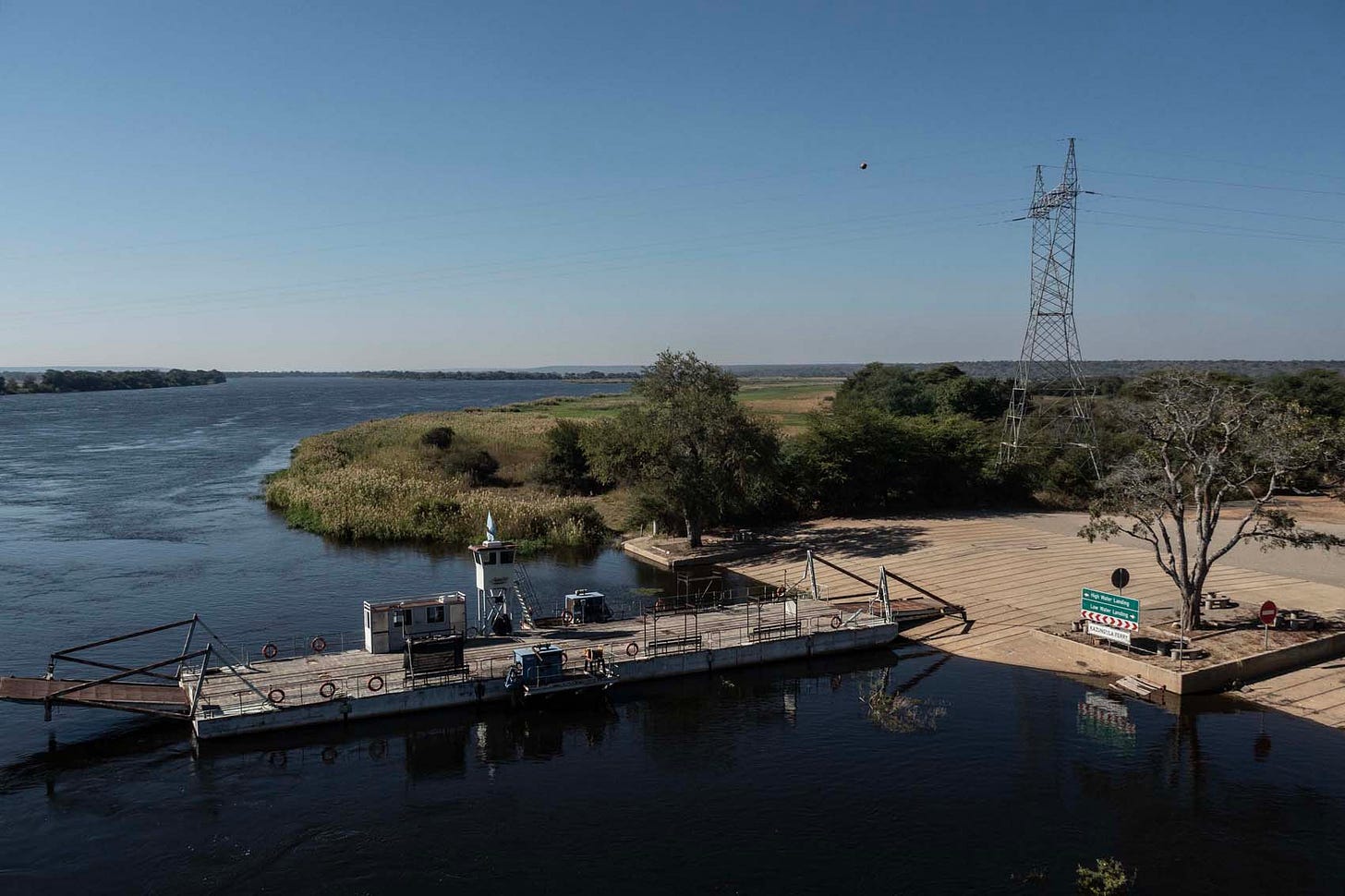
Kazungula’s role as a gateway is not new. For decades, it processed labourers bound for South African mines, embedding the town in a continentwide history of migration.
Today, its people still straddle old and new worlds, negotiating identity through movement and memory. The border post is not just a bridge between nations; it is a bridge between eras, between necessity and ambition.

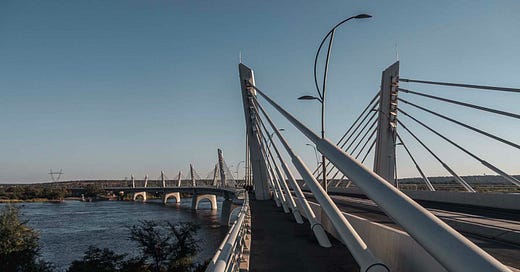



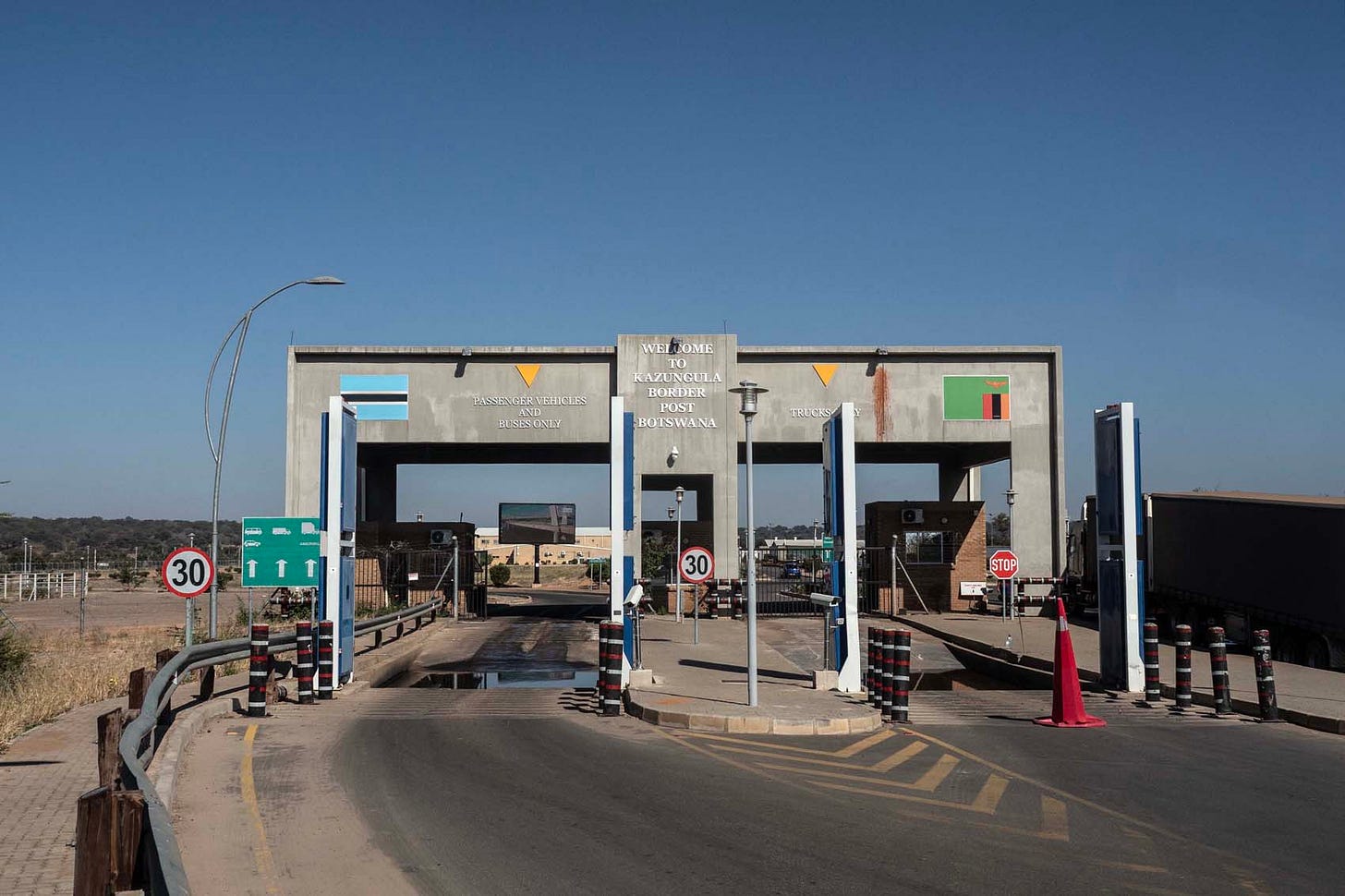
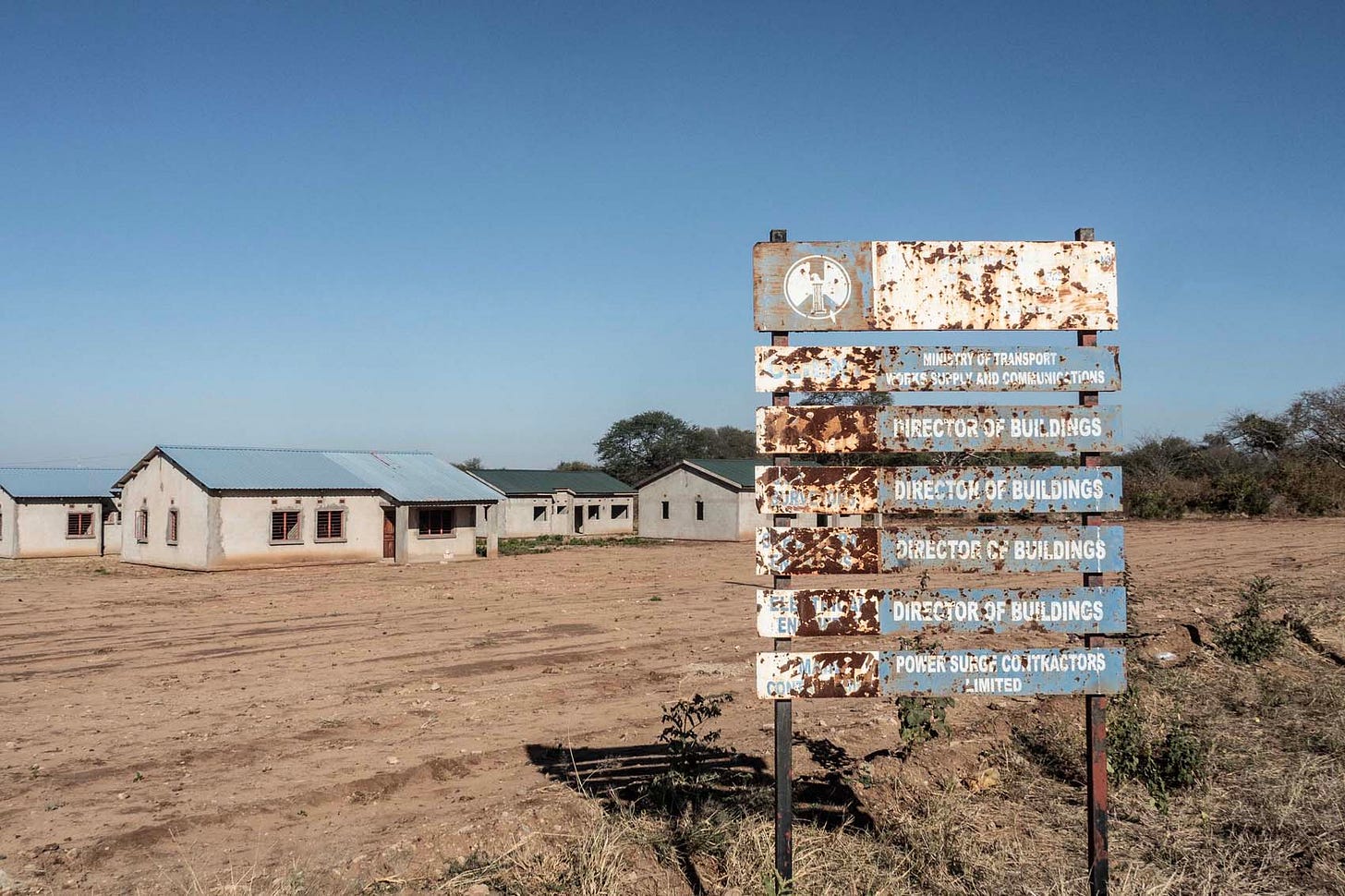
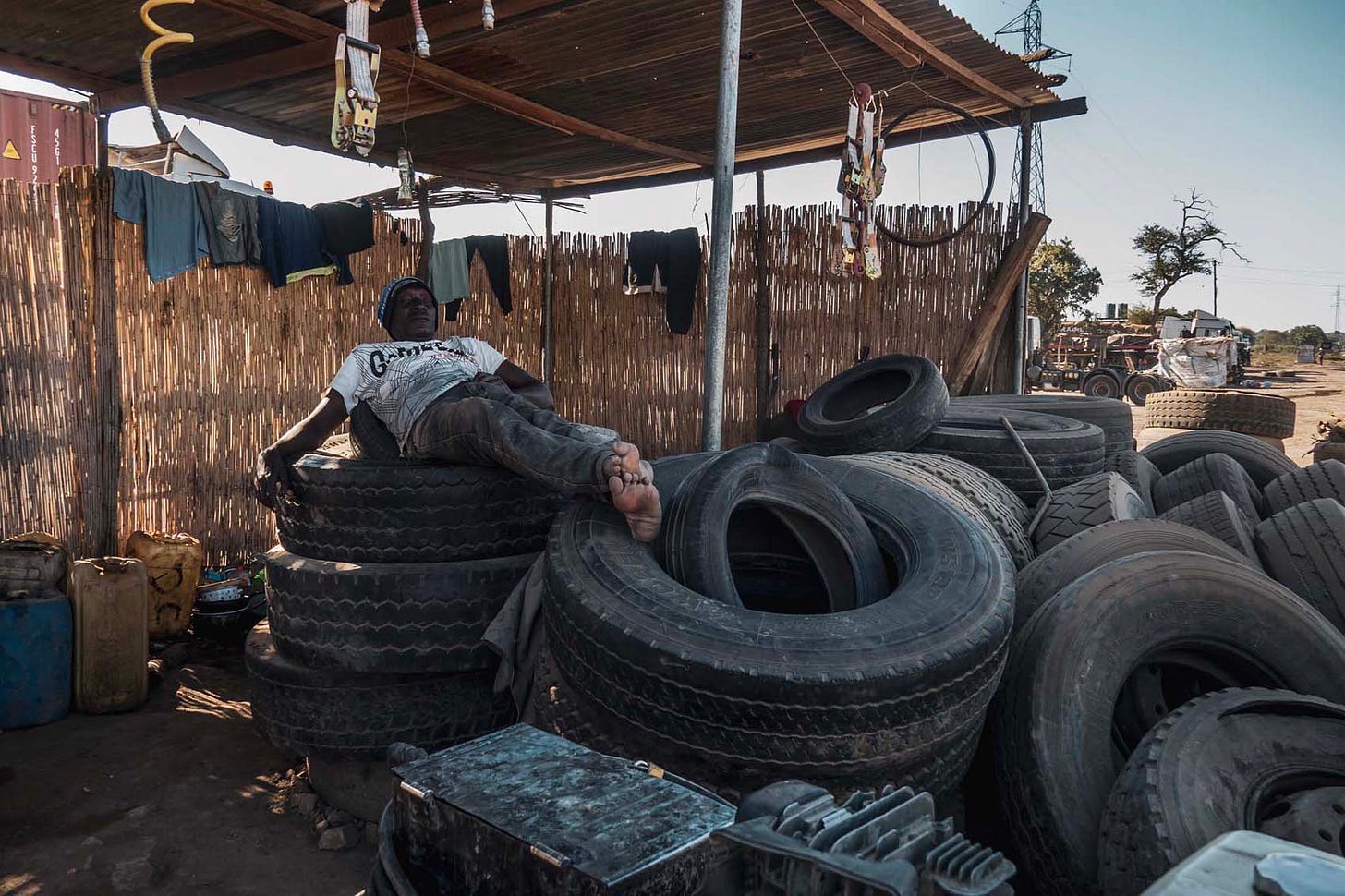
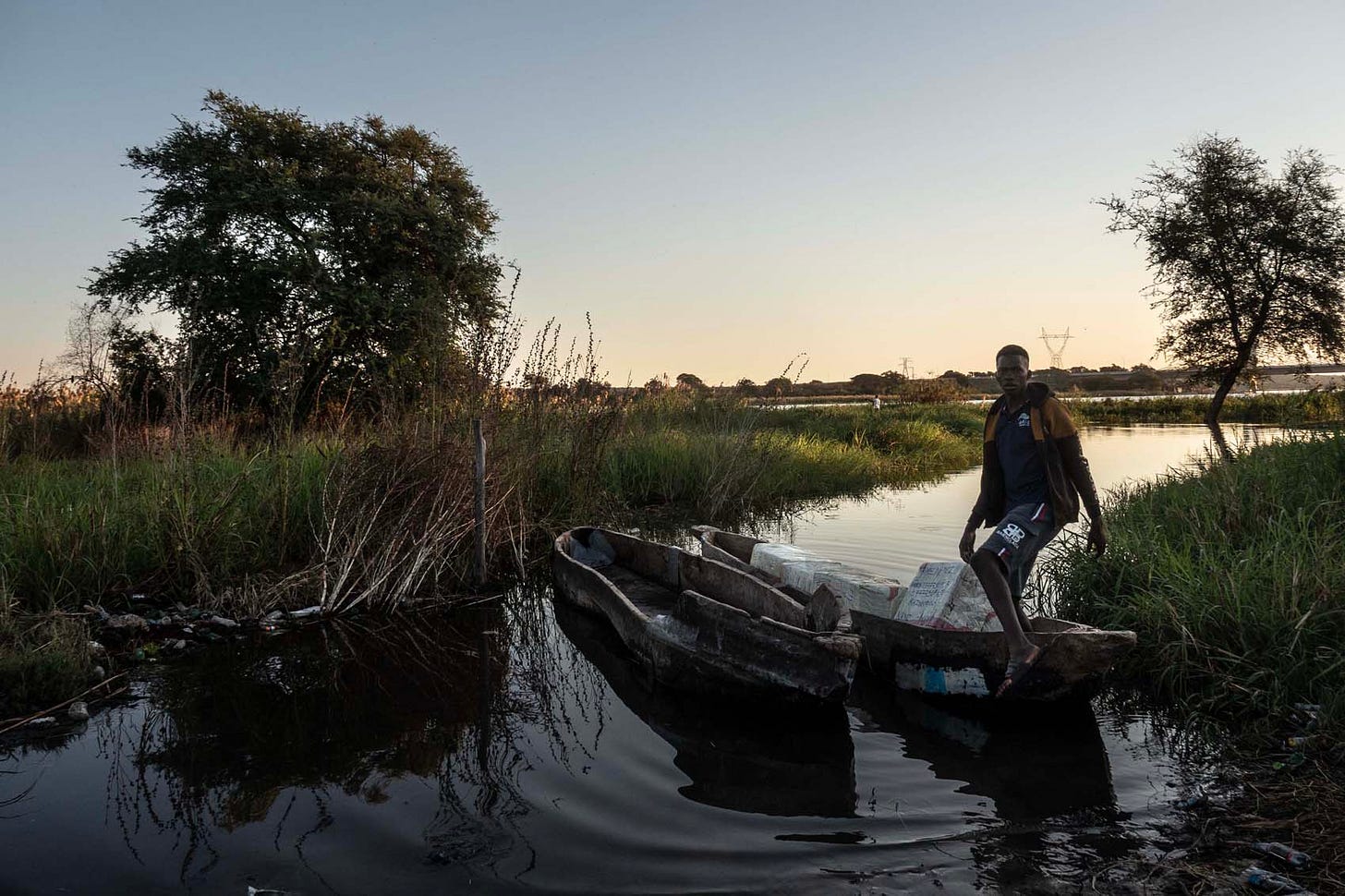
Superb writing, thank you for the insight, good pictures, though one always wants more pictures!
Excellent writing, thank you for this info. Made current affairs very intriguing and a people unseen, seen. Thank you!